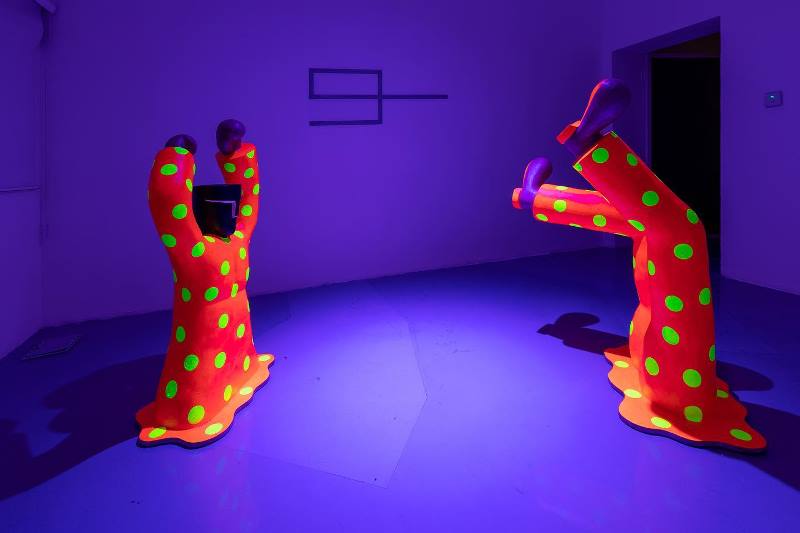Delving into Siah Bazi and character of Mobarak in painting and sculpture raises the question of whether, like in storytelling, characterization can also be achieved in visual art. This was common in Iranian miniatures and church murals before the invention of film and the printing industry, and it can also be seen in illustrated book illustrations. However, the diversity in color, materials, and forms in the works of this exhibition resolved the characterization within itself. In my opinion, this forced achievement for the artist, through the elimination of form, broadened the visual language of his pervasive works. Roozbeh Sharif boldly ventured into pop colors and complex topographic forms in his sculptures. These varied prominences and recessions in the sculptures complicate their relationship with sculptures and enhance the dynamism and activity of the works.
In the arrangement of two-piece sculptures with good lighting in a suitable space, the importance of this presentation is evident as we view the art. Often, sculptures use stands, bases, or hanging ropes for installation, which can compromise the aesthetic appreciation of the works. However, the sculptures in this exhibition refrain from using additional elements like stands or hanging ropes for stability, thus enhancing the independence of their volumes.
Sharif had to consider the contrast between volume and two-dimensional ground when presenting sculptures alongside paintings. If the paintings were displayed alone, they would be better perceived. The method of presentation is so important that a group of critics also considers the exhibition as a presentation of how to exhibit. Presentation should not weaken the effect and should not be so strong that the artistic work is overshadowed by its presentation; as moving the work from one place to another can diminish its impact.
In one of the rooms, we face a full sculpture of Mobarak the Black-Face Jester, horizontally suspended from the ceiling with nylon threads. In my opinion, the dissolution of rituals and social symbols due to time exists in this sculpture, and other sculptures and paintings have created desirable artistic anarchy by disturbing the message. Although the sculptures had similarities in fine forms, the difference in dimensions highlighted their primary similarities with elements of color and substance. Pure colors that overwhelm the viewer and inject a sense of childhood into the work had a debatable confrontation with serious geometric forms. Given the similarity of this exhibition to last year’s exhibition by this artist and occasional repetition of color and form, it is better for the observer (gallery, audience, media, critic, etc.) to pay more attention to the works of this artist and be more sensitive.


